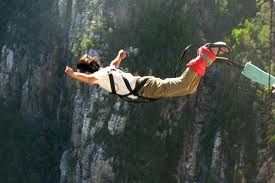Niche sites begin to lure the traveling Indian


In the fifty years or so after independence Indians have mainly associated travel with religious tourism—making long and arduous treks to visit holy shrines such as the cave temple in Jammu called Vaishnodevi or to Dargah’s at Sufi shrines in places like Ajmer.
In fact, perhaps the biggest and most spectacular example of mass religious tourism occurred when anywhere between 30 to 70 million or so Indians voyaged to the banks of the Ganges near the city of Allahabad for the Maha Kumbh Mela in 2013. Most of these were from villages and small towns across India with no disposable income to spend on fripperies such as hotels or guest-houses.
Instead, for days, they simply spread out thin items of cloth and lay down on them at night in the vast grounds that were apportioned to them, cooking daal (lentils) and rice from pots that they had carried with them and feeding their neighbours who hadn't brought anything with them. Apparently, a satellite image clearly showed this awesome spectacle from miles above the earth, one of the largest instant-cities that the world has ever seen.
But this is a newer India with a fast rising middle class who have fatter wallets and an appetite to spend the far greater salaries that they are now earning compared to their parents who toiled away in a socialist economy in paternalistic companies which offered greater work security but meager pay.
With globalization comes more frequent work travel abroad, Anthony Bourdain and Bear Grylls piped into your living room thanks to channels such as National Geographic and all the attendant stresses and strains of being part of a rising economic star. And so, the need to blow of steam is now greater than ever before.
This means that no longer is a trip to Manali or Shimla or Kanyakumari with the entire clan good enough. Now, families want something out of the ordinary and young men and women eager to escape the corporate rut for a week or two clamour for adventure and thrills. Corporates, too, want to recharge their employee's batteries on retreats where they orchestrate activities to forge stronger bonds with and amongst them. And so, a clutch of companies has sprung up over the last few years to cater to this new trend.
For instance, fast-growing Trabblr has struck upon the innovative idea of connecting fellow travellers with each other in small groups to explore places (competing with global giants such as Meetup.com and couchsurfing.com)—although I'm amazed at how they prevent serial killers from stalking people using their site.
Then there's Thrillophilia, a marketplace for tours which apparently curates 400 activity-based tours and 1,000 unusual travel experiences on their website—which, while catering to the bungee jumpers, includes the more placid activities such as a plantation walk—and has forged alliances with 450 regional service providers. The company's 4-people outdoor department even go out and test-drive individual experiences and then curate the best ones.
The company says that its 27-member company serves 2,200 customers a month (solo travelers, corporates, group bookings of upto 150 people) and that they brought in a little over US$1 million in revenue last year. Twelve percent of its customer base is international but its real bread and butter comes from its 500-strong corporate client base which include Google, Mercedes-Benz, Accenture, Volvo, Wipro amongst others, comprising 60 percent of its revenues, something that online travel companies with pure B2C plays should take note of.
Other companies treading similar water are Tushky, a 500Startups-backed website, and iExperience. There are others who have spotted opportunities where none seemed to exist—such as Mumbai-based audio mobile travel guide AudioCompass , which charges tourists Rs 120 (A little over US$2) for audio tours o historical sites, museums and monuments. The Ministry of Tourism has found their product compelling enough to partner with them and so has Blume Ventures and travel industry veteran Urrshila Kerkar who collectively gave them Rs 2.5 crore (US$400,000).
Then there’s 360hrs.in which, borrowing inspiration from Pinterest, allows you to share and categorize your favourite experiences and locations from various cities around the world through travel boards and itineraries. You can keep track of their friends’ favourite spots or follow the site’s own band of experts in food, travel, wine and other areas.
With the US$22-billion online travel market continuing to expand at upwards of 20 percent according to experts, this is an opportune moment for innovative travel ideas to take wing although it’s become such a competitive space with such thin margins that only the most innovative business models with a stable pipeline of clients will truly fly.